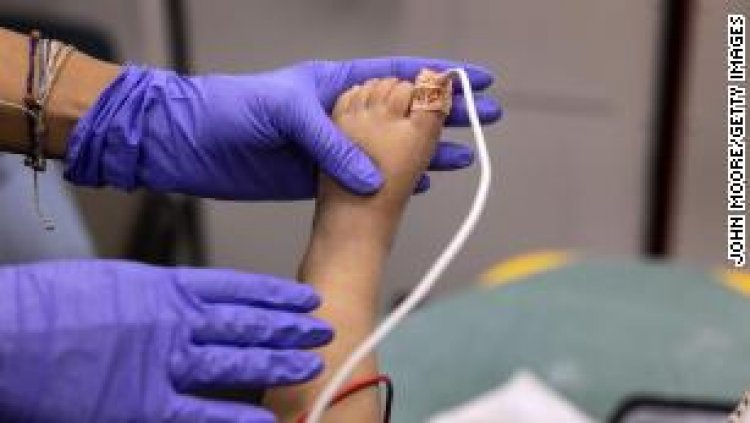After researchers accounted for things that might influence a person's risk of severe diseases, such as older age, they found no difference in the risk for hospitalization between people infected by BA.1 and those infected by BA.2. Roughly one-quarter of people hospitalized with both BA.1 and BA.2 infections were fully vaccinated.
Those findings echo hospitalization studies from Denmark, where BA.2 is also the predominant cause of Covid-19 infections.
The lead researcher on the South African study, Dr. Nicole Wolter, says that while it's difficult to say how the South African experience with this variant may translate to other countries, what they're seeing from BA.2 after their fourth wave isn't a second peak, but a long tail.
"We have seen an extended wave which has currently plateaued at a higher level than we have seen in previous inter-wave periods," Wolter wrote in an email to CNN. "This may however also be influenced by schools opening following the December holiday period and a general relaxing of restrictions," wrote Wolter, who is a principal medical scientist at the National Institute for Communicable Diseases in Johannesburg.
Though cases have stayed at a high level, and most are now caused by BA.2, hospitalizations have continued to decline.
What about reinfection risk?
The second new study, from Denmark's Statens Serum Institut -- the country's equivalent to the US Centers for Disease Control and Prevention -- looked at the risk of reinfection with BA.2 after recovery from a Covid-19 infection caused by other recent variants, including Delta and BA.1
The study found that people who've recently had a Covid-19 infection caused by Omicron or Delta can be reinfected by the emerging BA.2 subvariant, but such cases appear to be uncommon, afflict mostly those who are unvaccinated, and result in mostly mild infections.
BA.2 is currently the dominant cause of Covid-19 in Denmark. It overtook BA.1 during the second week of January there.
To look at reinfection risk, researchers combed through more than 140,000 viral genomes that were sequenced from infections during the period when Omicron became dominant (late November to mid-February 2022) to find people who had a new positive test 20 to 60 days after a previous one.
They found a total of 263 reinfections, with 190 of those caused by the BA.2 variant. In 140 cases, the person was reinfected by BA.2 after an infection caused by the Delta variant. There were 47 cases where people were first infected by BA.1 (the original Omicron variant) followed by the BA.2 subvariant.
Researchers then did a more in-depth analysis of those 47 reinfections where BA.2 followed BA.1. Most of the individuals who were reinfected were young -- 30 were under age 20. None of the reinfected individuals was over age 40 and nearly all -- 42 of the 47 individuals -- were unvaccinated.
The majority of reinfections were minor; 28 persons experienced no or minor symptoms. Five patients had symptoms that were described as moderate and resembled flu-like symptoms. There were no hospitalizations or deaths among those who were reinfected.
According to the research, "Reinfection is possible in patients who have recently recovered from BA;1, although it is uncommon. And it wasn't severe in any of those cases "According to Rasmussen, who evaluated the paper but was not engaged in it,
According to her, while BA.2 reinfection is a risk, it is a minor one compared to the whole population, and "that recent immune boost induced by either boosters or recent Omicron infection is essentially going to protect most of the population against it," she explained.


 Boakyewaa Lawrencia
Boakyewaa Lawrencia 


































